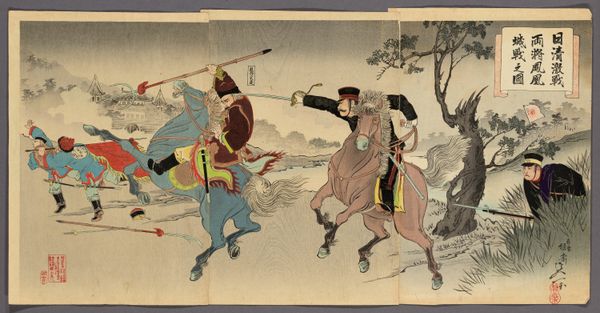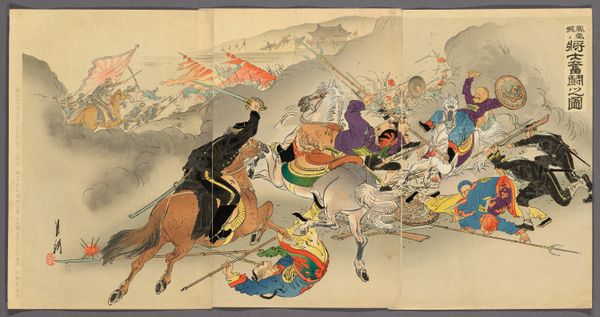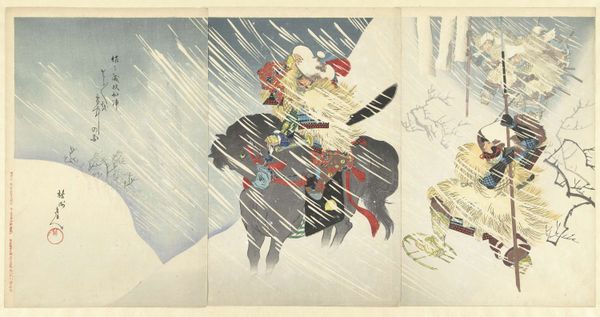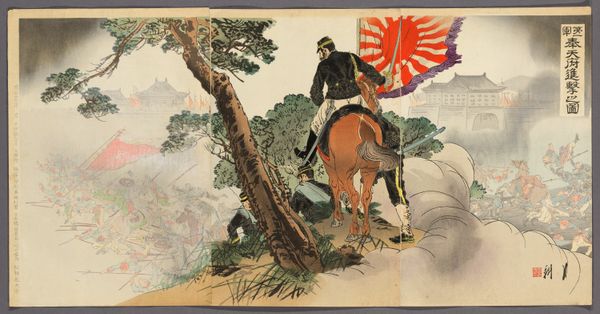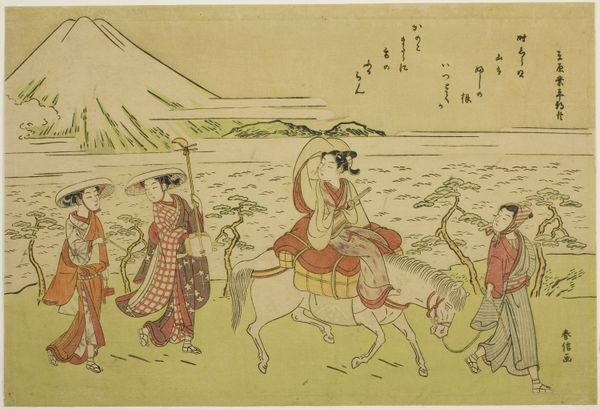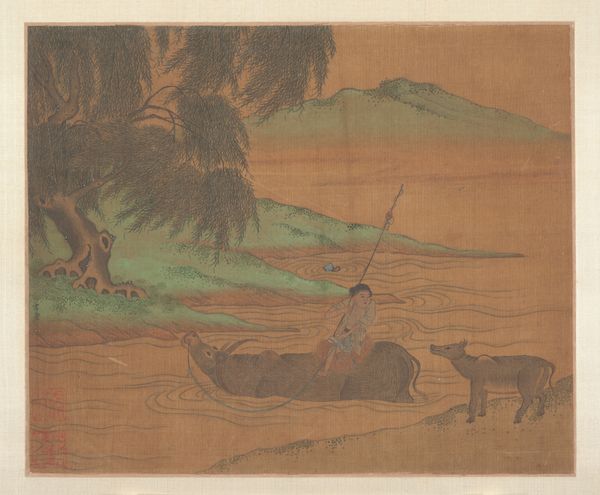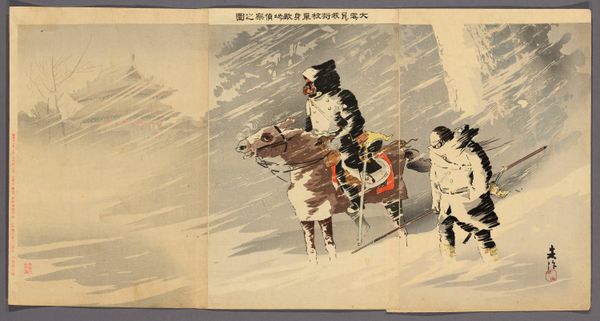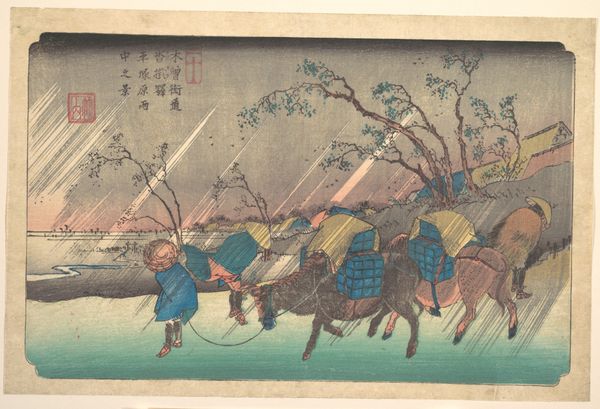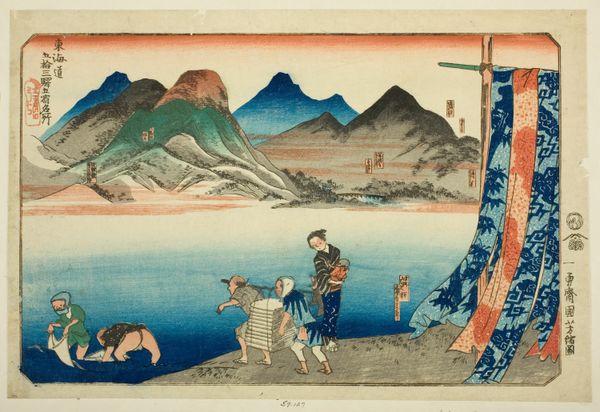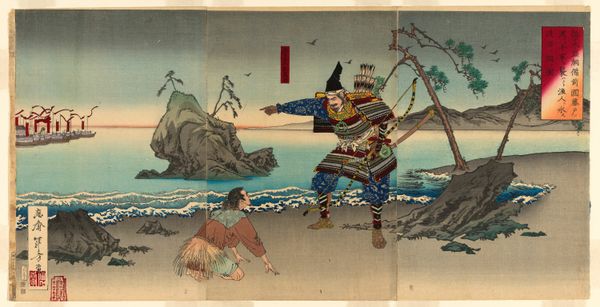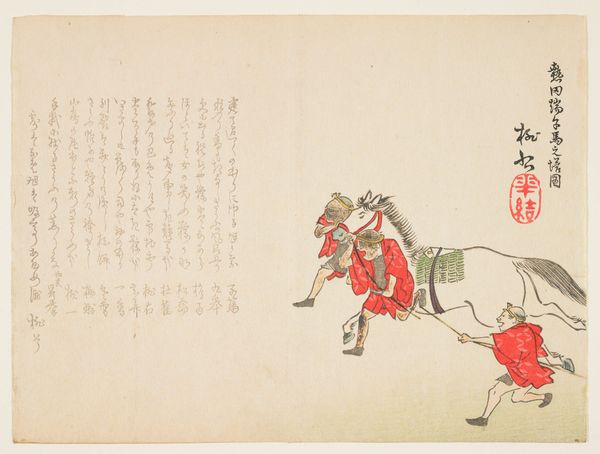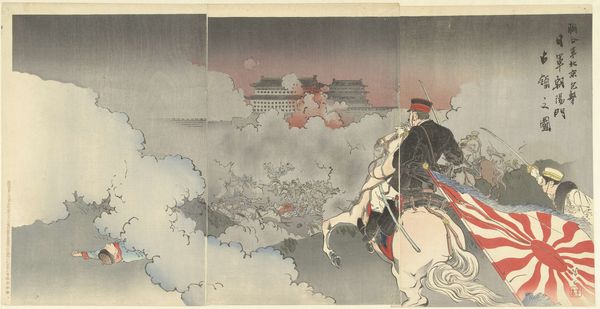
Manchurian Horsemen Scouting from a Distance the Japanese Camp Near Sauhoku (Sokako fukin Nichijin enbo Manshu kihei iso shutsujin no zu) 1894 - 1895
0:00
0:00
Copyright: Public Domain
Editor: This is "Manchurian Horsemen Scouting from a Distance the Japanese Camp Near Sauhoku" by Taguchi Beisaku, created between 1894 and 1895. It's a Japanese woodblock print. I’m really struck by the landscape depicted here—the fading sunset seems almost ominous against the military subject matter. What do you make of the medium and context? Curator: What intrigues me here is how the print medium itself speaks to mass production and dissemination. This image, multiplied and circulated, fueled public sentiment regarding the Sino-Japanese War. Think about the labor involved: the artist’s design, the carver's meticulous work on the woodblocks, and the printer’s craft in applying colors. This isn't just about aesthetics; it's a cog in the war machine, churning out propaganda for consumption. Notice, too, the contrast between the supposedly 'high art' status of landscape and its integration with military narrative here. Editor: That's a very interesting idea - I had never considered how propaganda can take shape, not only through distribution and content, but by considering the laborers producing the art piece itself. Are you suggesting that the commercialization of Ukiyo-e contributed to the popularization of war narratives during this period? Curator: Precisely! The established infrastructure for producing and selling ukiyo-e prints – a commercial system driven by consumer demand – readily adapted to the war. These images weren't made in a vacuum; they were products of a specific socio-economic climate, catering to a public eager for news and representations of the conflict. Editor: So the medium shaped the message, influencing and reflecting public opinion in a time of war. That changes everything about how I viewed it. Curator: Indeed. Thinking about art's materiality and production provides invaluable insight into its function. I'm happy that you found that to be a useful insight, which allows for one to really begin delving deeper in how historical and societal influences contribute to each piece.
Comments
No comments
Be the first to comment and join the conversation on the ultimate creative platform.
